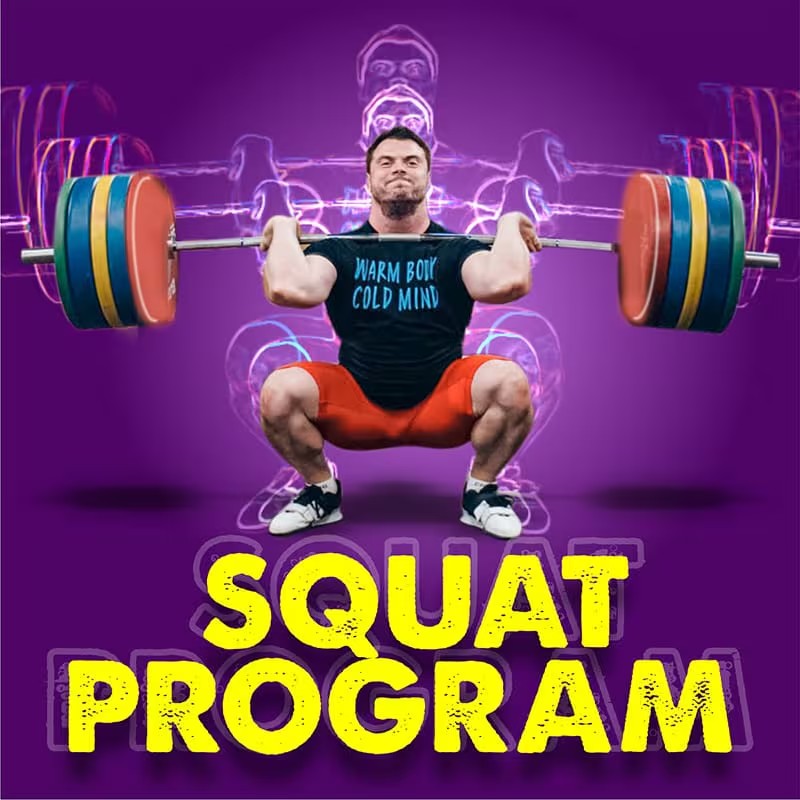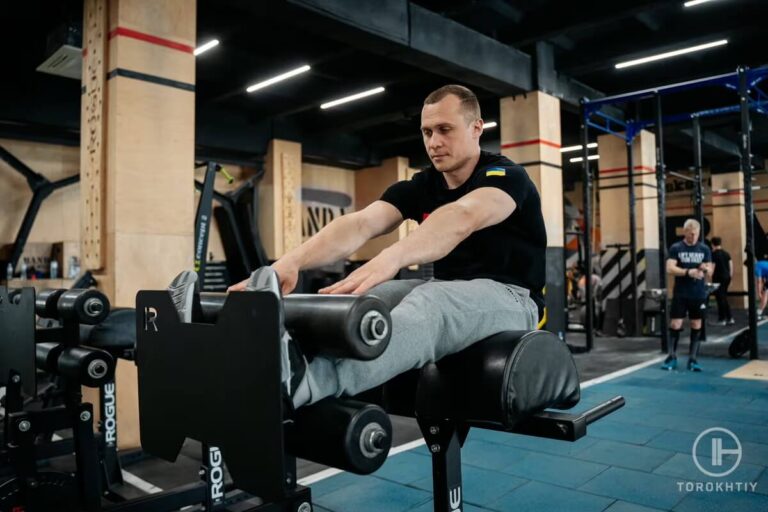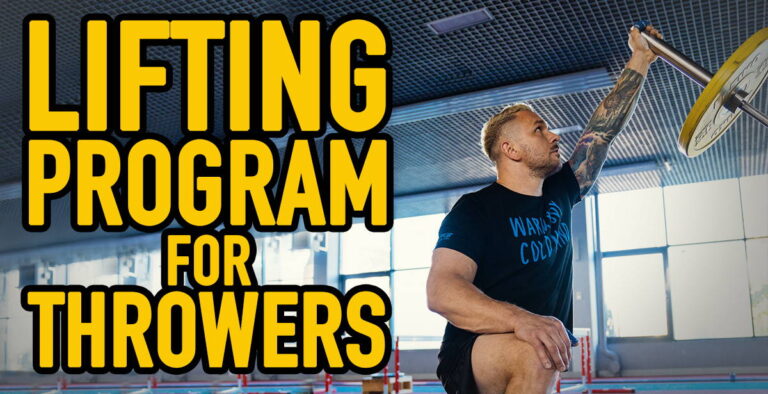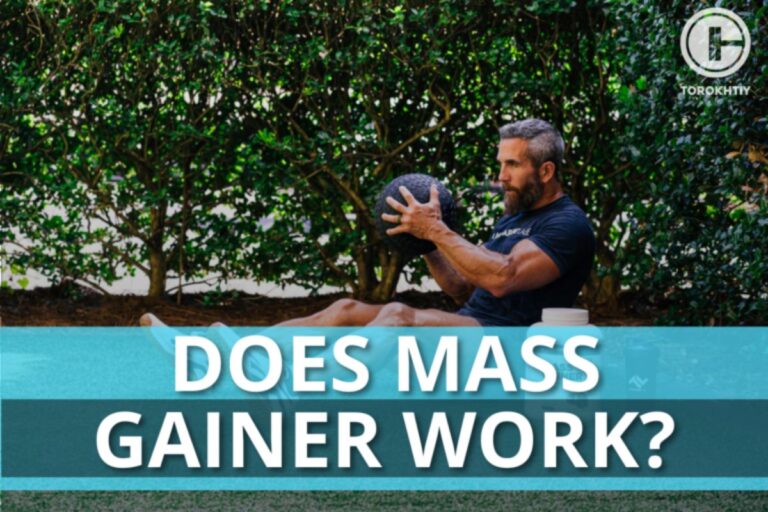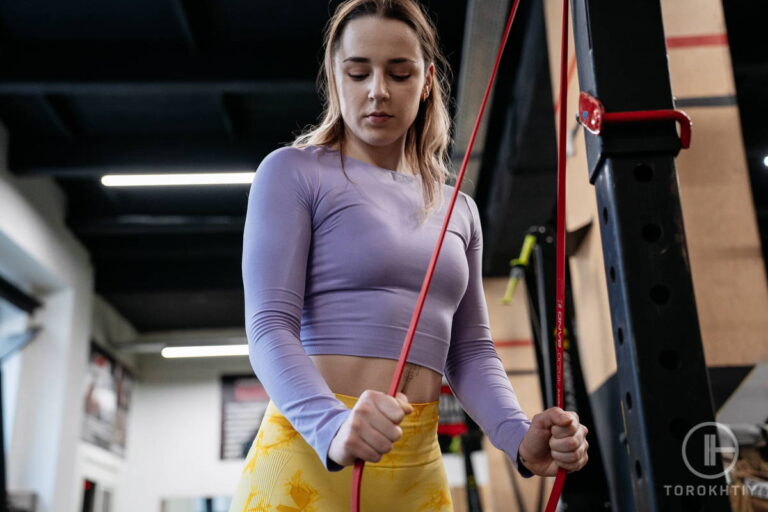Lower Back Pain When Squatting: Causes & Fixes
Lower back pain when squatting is a common complaint among those who incorporate strength training into their fitness routine. This multifaceted issue can be a hindrance to both performance and everyday well-being. Squatting a complex movement, engages multiple muscle groups and joints, and when performed incorrectly can place stress on the lower back.
This article helps into the various facets of lower back pain related to squatting. We will explore the anatomy of the lower back, the mechanics of proper squat and identify specific injuries that can arise from this exercise.
Lower back pain when squatting is often due to poor form, insufficient warm-up or underlying spinal conditions. Ensuring proper technique, such as keeping the spine, natural and engaging core muscles, can help prevent the pain and injuries during this exercise.
Furthermore, we aim to provide actionable advice on how to fix lower back pain after squats, ensuring that enthusiasts of this foundational movement can continue to train effectively, and without discomfort.
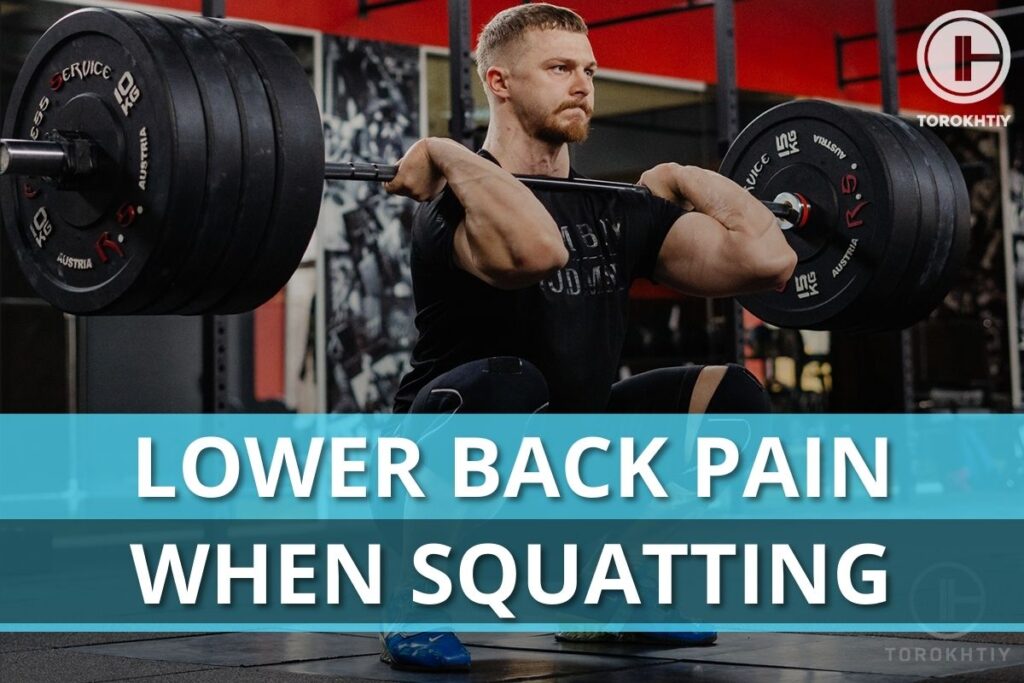
Understanding Lower Back Pain In Squats
1. Anatomy of The Lower Back
The lower back or lumbar region is a complex structure of interconnecting bones, joints, nerves, ligaments, and muscles all working together to provide support, strength and flexibility. This area comprises the five lowest vertebrae known as L1 through L5. Between these vertebrae lie intervertebral discs that act as cautions and shock absorbers.
Supporting this are the paraspinal muscles and core musculature. These components are crucial in maintaining proper posture and stability during movements, such as squatting. An understanding of this anatomy is essential for recognizing how and why the lower back hurts when squatting.
2. Mechanics of Squatting
Squatting is a compound movement that requires coordinated actions from the hips, knees, and ankles, along with a strong core engagement. Proper squat techniques involve keeping the back in a neutral position, chest up, and the weight of the body distributed through the heels and mid foot.
As one descends, the hip should move back and down, while the knees track in line with feet. Maintaining this form ensures that the glutes, quads and hamstrings are effectively engaged, minimizing the strain of the lower back. Deviations from this technique can shape the load improperly, leading to potential pain or injuries.
3. Common Causes of Lower Back Pain After Squats
So, why does your lower back hurt after squats? Lower back pain from squats often arises from poor form, insufficient warm-up or existing back conditions. Bad form and rapid weight increases strain muscles and ligaments while in adequate warm-up muscles susceptible to injury.
Underlying issues like disc problems or muscle imbalances also contribute to pain.
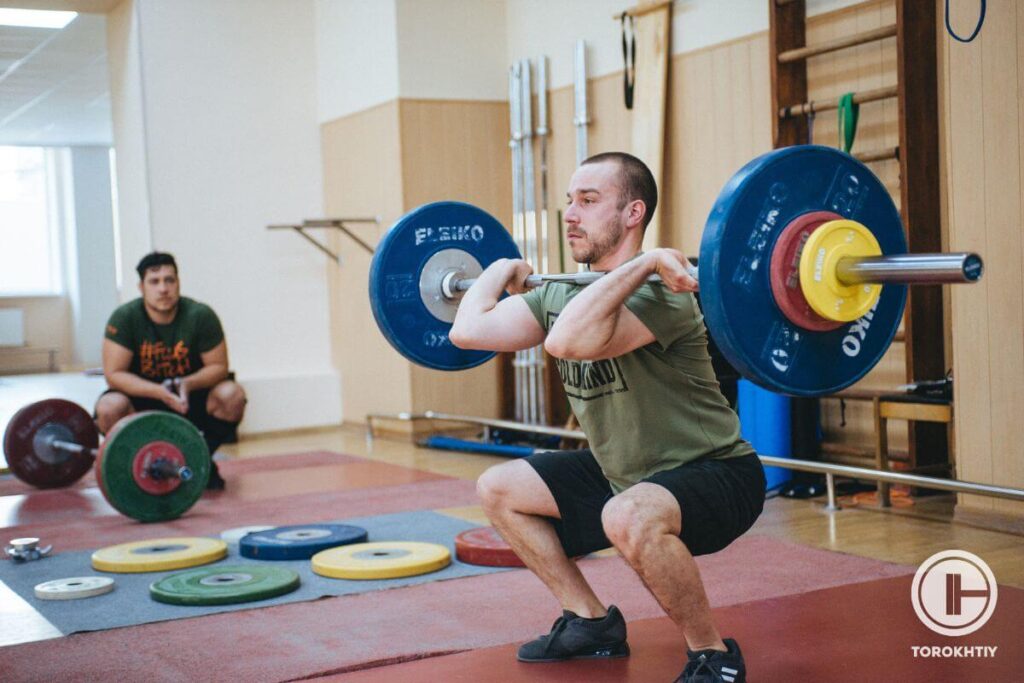
Identifying Lower Back Injuries Related To Squats
1. Types Of Lower Back Injuries
Lower back injuries from squats, commonly manifest as muscle or ligament, strains, vertebral disc, herniations, or face joint pain. Muscle strains occur when fibers in the paraspinal muscles are overstretched or torn, often a result of sudden, awkward movement or lifting excessive weight.
Ligament sprains involve similar mechanisms, but affect the tough bands connected spinal bones and stabilizing the spine. Herniated discs, another potential injury, happen when the inner gel-like core of an intervertebral disc protrudes through its outer layer exerting pressure on nearby nerves.
This can be due to the cumulative stress of improper, squatting technique over time. Faced joint pain arises from inflammation, or microscopic injuries to the joints, linking the vertebra, which can be exacerbated by excessive arching or twisting of the back during a squat.
Also you should know the difference between pain and lower back sore after squats or tight lower back after squats. Identifying the type of problem or injury is crucial for appropriate treatment and recovery.
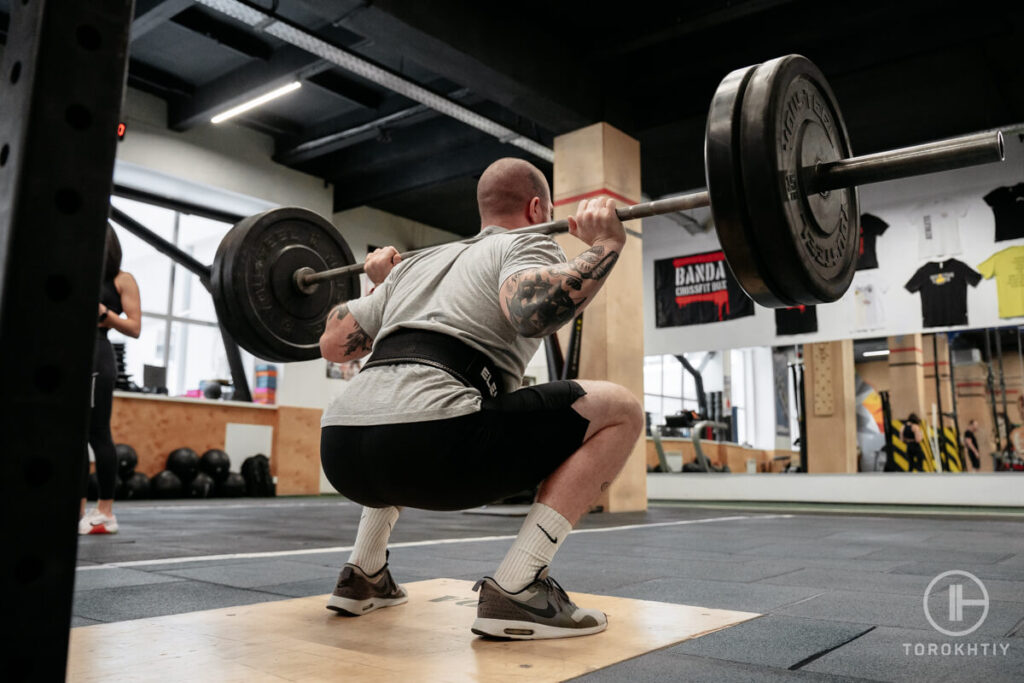
2. Symptoms of Injuries
The symptoms of lower back injuries from squats, very dependent on the injury type, but commonly include localized pain, stiffness and reduced mobility. Strains may cause a dull, aching pain that intensifies with movement, and in severe cases result in muscle spasm.
With ligaments sprains, pain might be sharp and accompanied by swelling or bruising. Herniated discs can lead to sharp, shooting pains that can radiate down the leg, a condition known as sciatica, along with numbness or tingling, if nerve compression occurs.
Faced joint issues may result in pain that worsen with twisting or arching movements. Additionally, a decrease in the ability to maintain proper posture or perform daily activities without pain can signal lower back injury.
Early identification and treatment of the symptoms can significantly improve recovery outcomes to help maintain overall spinal health.
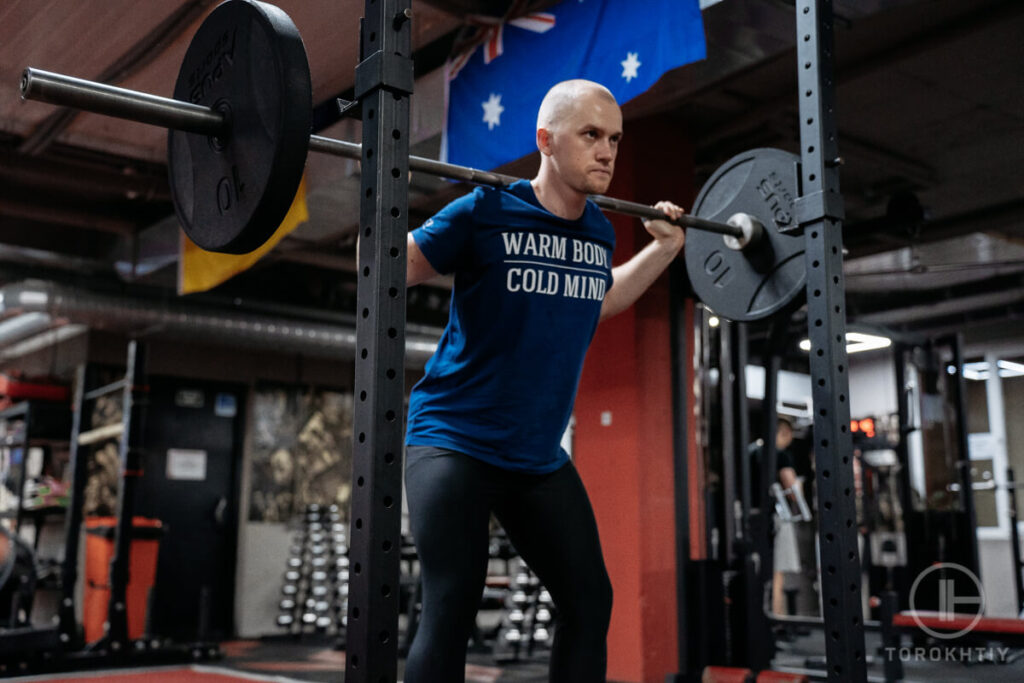
Preventing Lower Back Pain From Squats
1. Proper Warm-Up Techniques
Adequate warm up is essential to prepare the muscles and joints for the demands of squatting. Begin with 5 to 10 minutes of light cardiovascular activity, such as jogging or cycling to increase overall body temperature and blood flow.
Follow this with dynamic stretching that mimics the squatting movement like bodyweight lunges or leg swings to enhance the range of motion. Incorporating mobility exercises, such as hip circles and thoracic rotations can further lubricate joints and the core and gluteal muscles.
Also, specific squats warm up, not only increases muscle playability, but also establishes neuromuscular connections that are crucial for maintaining proper form during squats significantly reducing the risk of lower back pain.
2. Correct Squatting Technique
To execute squats safely, start by standing feet shoulder-width apart, and toes slightly pointed out. Engage your core, keep your chest up. As you descend, hinge at the hips and push it back as if sitting into a chair. Ensure your knees stay in line with your feet and don’t let them collapse inward.
Lower yourself only as far as you can maintain flatback in the ascent, drive through the heels and engage glutes to return to a standing position. It’s crucial to avoid overarching or round in your back throughout the movement.
Practicing with a lighter weight or a body weights squat can help reinforce proper mechanics before adding more kilos.
3. Strengthening Exercises for The Lower Back
Beyond the squat itself, strengthening the lower back, and its supporting muscles is vital for preventing pain. Exercises, such as the plank and bird dog, promote core stability, which is crucial for protecting the spine during squats.
Deadlifts when performed with correct form, strengthen the entire posterior chain, including the lower back. Hip thrust and bridges target the glutes, reducing the strain on the lower back by ensuring proper engagement during lower body exercises.
Incorporate these movements 2-3 times a week, focusing on form and controlled movements, rather than heavy weights. Over time these exercises can build a solid foundation, reducing the likelihood of pain and injury during squats and other activities.
Treating Lower Back Pain From Squats
1. Immediate Response To Injury
If you experience lower back pain, during or after squatting, it’s important to act promptly. Here are some ideas on how to fix lower back pain from squats. Initial treatment should follow the R.I.C.E. protocol – rest, ice, compression and elevation.
Cease any activity that exacerbates the pain and rest the affected area to prevent further injury. Apply ice packs in 20-minute intervals during the first 48 hours to reduce inflammation and pain.
If possible, use compression with a back support to minimize swelling and elevate the torso when lying down to decrease blood flow to the injured area. Over-the-counter anti-inflammatory medication may help alleviate pain, but they should be taken with caution, and preferably under medical advice.
This immediate care can help manage symptoms and jump-start the healing process for minor back strains related to squats.
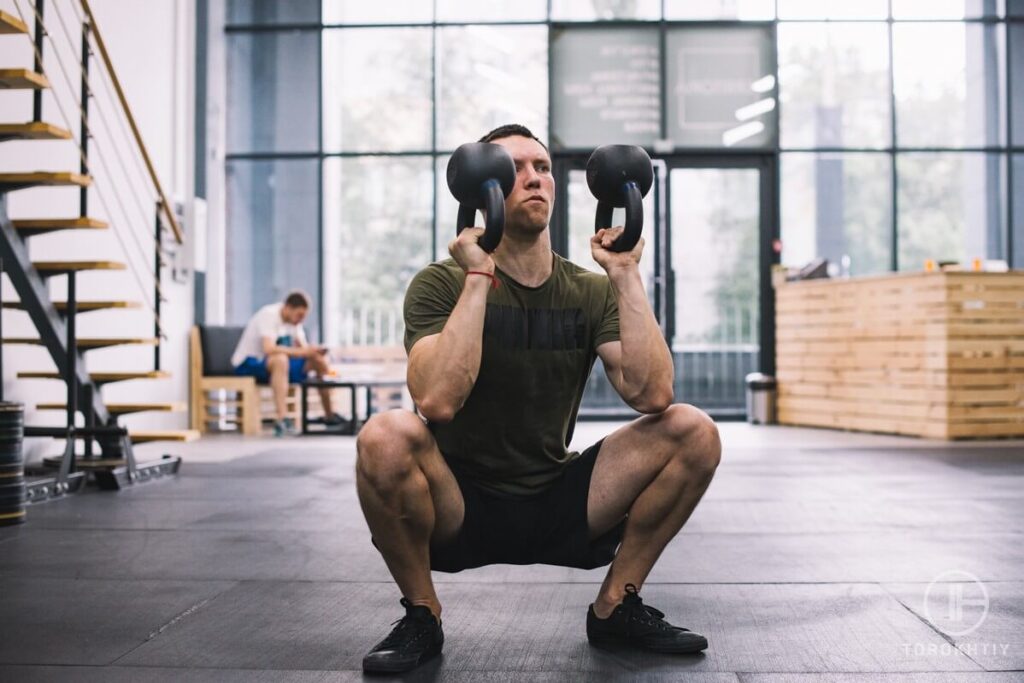
2. Long-Term Treatment Options
For sustained or sharp lower back pain after squats a more comprehensive treatment plan may be necessary. Once acute inflammation subsides, introducing gentle stretches and strengthening exercises can help rehabilitate the lower back.
Physical therapy is often beneficial, providing personalized exercises that target muscle imbalances and improve core stability. In some cases, chiropractic adjustments or massage therapy may be recommended to alleviate pain and improve function.
If conservative measures are insufficient, medical interventions, such as corticosteroid injections, or in severe cases, surgery may be considered. Throughout treatment, maintain open communications with doctors to tailor pain management strategies effectively.
3. Recovery and Returning to Squats
The road recovery after lower back injury from squats should be gradual, beginning with non-weight-bearing activities, like walking or swimming to maintain fitness without loading the lumbar spine region.
As pain permits, slowly introduced lower body exercises, starting with bodyweight movements and paying close attention to form. It’s essential to ensure that the core is engaged and the back remains neutral during these exercises.
Before returning to weighted squats, achieve pain-free range of motion, and sufficient strength in the core and lower body. Start with lightweights and increase gradually, always prioritizing form over weight lifted.
🔻12 Week Squat Program by Oleksiy Torokhtiy
Do you want to double your squat strength? In just 12 weeks, you’ll be able to boost your squat results.
This program transforms any ordinary squat into a powerful athletic movement.
What’s included:
- 12 weeks of squat programming;
- Effective combination of sets, reps, and weights;
- Fully designed and coached by Oleksiy Torokhtiy;
- Over 60+ movements, banded work, and weight training;
- Accessory work for core, joint stability and injury prevention;
- Max out on back squat and front squat at the end.
Start now and boost your squat results!
Additional Considerations And Tips
1. Modify Workouts
When lower back pain is a concern, modifying workout is key to continue exercises without aggravating the condition. For those who experience discomfort with traditional squats, alternatives like split squats or step ups, can be equally effective for lower body development by reducing lumber load.
Additionally, using a stability ball for wall squats can help maintain an upright posture which minimizes back strain. It’s also beneficial to intersperse squatting with core-strengthening exercises to ensure the back is supported by a strong, muscular corset, reducing the reliance on the lumbar spine during compound movements.
2. Equipment and Accessories
The use of appropriate equipment and accessories can play a significant role in preventing and managing lower back pain from squats. Lifting belts can provide additional support for the lower back by increasing intra-abdominal pressure, which in turn helps to stabilize the spine in heavy lifts.
However, they should not be over-relied upon and are best used when lifting near maximal loads. Rollers and massage balls, also available tools for self-myofascial release, helping to alleviate muscle tightness and improve mobility.
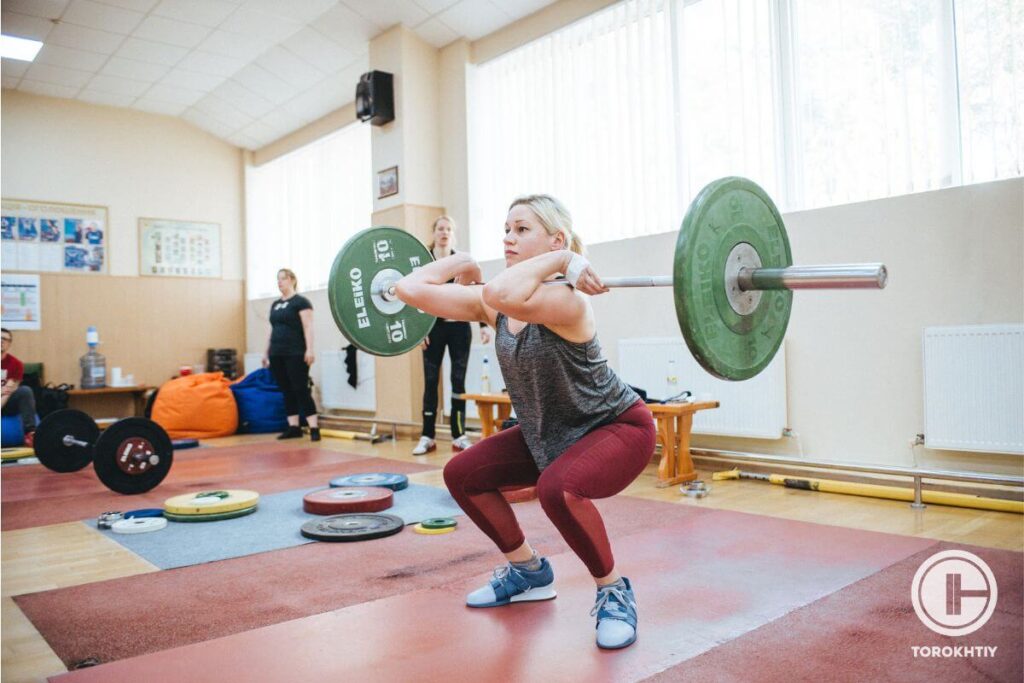
FAQ
Are Deep Squats Bad For Your Back?
Deep squats are not inherently bad for your back if performed with proper form and adequate mobility. However, they can increase the stress in the lumbar spine and surrounding muscles or as gym lovers say “feeling squat in lower back” making proper technique crucial.
Should I Squat Past 90 Degrees?
Squatting past 90° is acceptable as long as it’s within your comfortable range of motion and doesn’t cause pain. This deeper range can engage muscles more fully, but it’s important to maintain a neutral spine throughout the movement.
How Deep Is Too Deep For Squats?
How deep one should squat varies by individual flexibility, hip structure, and strength. “Too deep” is when form is compromised, such as “butt wink” or the lower back rounding, which can lead to injury. Listen to your body and prioritize form over depth.
Conclusion
Understanding and addressing lower back pain, when squatting is essential for both your immediate and long-term, spinal health. By incorporating proper techniques, rehab exercises and smart recovery strategies, you can enjoy the benefits of squatting without risk. Your experiences, insights and questions are invaluable.
Join the conversation below and share your journey or sick advice on managing lower back concerns. Let’s learn and grow stronger together. Engage with us in the comments!
References:
- Patel VB, Wasserman R, Imani F. Interventional Therapies for Chronic Low Back Pain: A Focused Review (Efficacy and Outcomes). Anesth Pain Med. 2015 Aug 22;5(4):e29716. doi: 10.5812/aapm.29716. PMID: 26484298; PMCID: PMC4604560.
- Matheve T, Hodges P, Danneels L. The Role of Back Muscle Dysfunctions in Chronic Low Back Pain: State-of-the-Art and Clinical Implications. J Clin Med. 2023 Aug 24;12(17):5510. doi: 10.3390/jcm12175510. PMID: 37685576; PMCID: PMC10487902.
- Washmuth NB, McAfee AD, Bickel CS. Lifting Techniques: Why Are We Not Using Evidence To Optimize Movement? Int J Sports Phys Ther. 2022 Jan 1;17(1):104-110. doi: 10.26603/001c.30023. PMID: 35024210; PMCID: PMC8720246.
- Hartmann H, Wirth K, Klusemann M. Analysis of the load on the knee joint and vertebral column with changes in squatting depth and weight load. Sports Med. 2013 Oct;43(10):993-1008. doi: 10.1007/s40279-013-0073-6. PMID: 23821469.
- Bukhary HA, Basha NA, Dobel AA, Alsufyani RM, Alotaibi RA, Almadani SH. Prevalence and Pattern of Injuries Across the Weight-Training Sports. Cureus. 2023 Nov 30;15(11):e49759. doi: 10.7759/cureus.49759. PMID: 38046743; PMCID: PMC10689975.
Why Trust Us?
With over 20 years in Olympic Weightlifting, our team does its best to provide the audience with ultimate support and meet the needs and requirements of advanced athletes and professional lifters, as well as people who strive to open new opportunities and develop their physical capabilities with us.
By trusting the recommendations of our certified experts in coaching, nutrition, dietology, and sports training programming, as well as scientific consultants, and physiotherapists, we provide you with thorough, well-considered, and scientifically proven content. All the information given in the articles concerning workout programming, separate exercises, and athletic performance, in general, is based on verified data. We ensure that you can rely on our professionals’ pieces of advice and recommendations that can be treated as personalized ones which will benefit you and fully meet your needs.
The product testing process is described in more detail here
Author: Sergii Putsov
Head of Sport Science, PhD
Best Results: Snatch – 165 kg,
C&J – 200 kg
Sergii Putsov, Ph.D., is a former professional weightlifter and National team member, achieving multiple medals in the 94 kg weight category at national competitions. With a Master’s degree in “Olympic & Professional Sport Training” and a Sport Science Ph.D. from the International Olympic Academy, Greece, Sergii now leads as the Head of Sport Science. He specializes in designing training programs, writing insightful blog articles, providing live commentary at international weightlifting events, and conducting educational seminars worldwide alongside Olympic weightlifting expert Oleksiy Torokhtiy.

